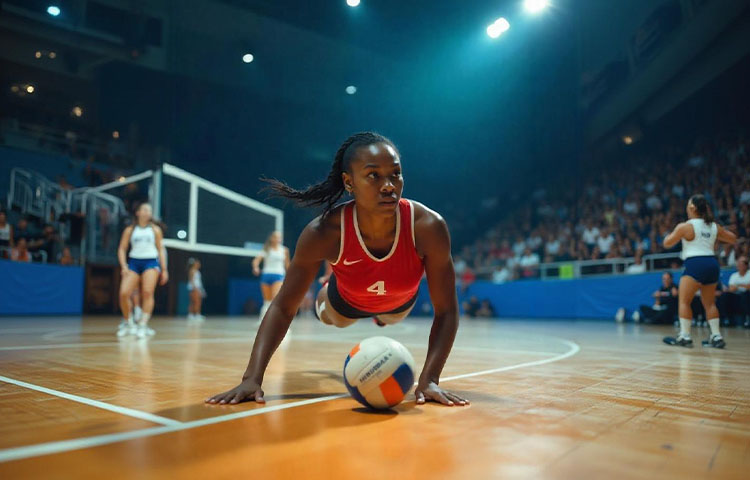
Volleyball positions and basic rules of the game
Volleyball is not just a game of reflexes and strength – it is also a game of positions, where each role has a clearly defined purpose within a broader team strategy. Players do not act individually, but as parts of a precisely tuned system, where every element must function flawlessly. In this context, understanding the various positions in volleyball is essential for analyzing a team’s performance – whether you’re a coach, a player, or a fan.
Recently, more and more sports enthusiasts have become interested in live betting on volleyball, which further highlights the importance of understanding individual roles. By watching matches live, recognizing who is in which position at any given moment, and how rotations affect gameplay, bettors can make more informed decisions. That’s why this article aims to offer a comprehensive overview of each position – from the setter to the libero.

Key characteristics of each position
According to the official rules of volleyball, there are six starting positions that rotate in a circular order after each point won by the opposing team’s serve. However, what rotates is not the players’ roles – their specializations remain the same. Each player, although technically changing position, maintains their specific function – whether it’s setting the ball, spiking, blocking, or defensive coverage.
Positions are divided into offensive and defensive roles, and maintaining balance between them is one of the key concerns for every coach. The setter, as the brain of the team, coordinates the plays and sets the rhythm. The spiker is the primary attacker, while the libero is responsible for controlling the backcourt. Each of these players brings unique skills and physical attributes – such as height, speed, strength, or tactical awareness and technical precision.
The setter's role: the brain of the team
The setter is without a doubt the most important tactical figure on the court. Their primary task is to give structure and meaning to every attack – delivering the ball precisely from the reception to the attacker at the ideal moment. This role demands exceptional concentration, as the setter must simultaneously monitor the opponent’s block, read the defensive setup, and decide which option is most effective.
Their decisions must be quick and accurate. In high-intensity matches, seconds make the difference, and the setter must respond almost instinctively. Communication with the rest of the team is crucial – especially with spikers and middle blockers. The best setters in the world are known for making their attackers look better than they actually are – because good ball distribution significantly simplifies attack execution.
Libero: defense specialist
The libero is the only position in volleyball with special rules: they are not allowed to attack above the height of the net, do not participate in blocking, and in most league systems are not permitted to serve. Precisely because of this, their defensive role is invaluable. The libero is responsible for the stability of serve reception and covering the backcourt. They are the player who dives for the ball, saves “impossible” plays, and continuously maintains the rhythm of the game.
The libero’s role requires exceptional fitness, as they almost never leave the court and are constantly in motion. Additionally, perfect game reading is essential – anticipating spikes, understanding the opponent’s tendencies, and being able to organize the defensive structure in real time. The libero often acts as the silent leader of the defense – directing without much noise, but their presence makes a decisive difference.
Spiker – the team’s main attacker
The spiker, also known as the outside hitter, is one of the most aggressive and physically demanding players on the team. Their primary responsibility is to score points through attacks from the left side of the court. But their role doesn’t end there – in addition to attacking, the spiker must also be a reliable serve receiver, capable of recognizing difficult serves and maintaining consistent reception.
The spiker’s position requires exceptional jumping power, explosiveness, and reaction speed. They must also develop the ability to attack the ball from all angles – at full height, on the run, and even under challenging conditions. Mental stability plays a key role: the spiker is often under pressure to score points in the decisive moments of a match.
Key characteristics of an excellent spiker:
- Height and jumping power
- Sharp hitting angle and fast swing speed
- Ability to block effectively from the front row
- Reliable serve reception
Blocker and middle blocker: pillars of defense
The middle blocker (or middle) serves as both a defensive and offensive pillar of the team. Their main role is to stop the opponent’s attacks with blocks, which requires excellent reflexes, height, and precise positioning in real time. They are the first wall the attacker must break through – and that wall often determines the outcome of the point.
In addition to defense, the middle blocker plays a key offensive role – performing quick attacks through the center of the net, which the setter uses to deceive the opponent’s block. This type of attack often comes as a surprise and can result in an easy point if executed at the right moment.
Middle blockers must:
- Synchronize their jump with the setter
- Read the opponent’s intentions quickly
- Maintain constant readiness to block
- Develop a strong sense of timing
Rotation and positioning rules
One of the most complex aspects of volleyball is rotation – a system in which players move one position clockwise after winning a point through the opponent’s serve. Although they physically change positions on the court, players still retain their specialized roles – the setter continues to set, the spiker continues to attack, and so on.
Proper rotation requires a high level of concentration, as any positional violation can result in the loss of a point. Additionally, player alignment before the serve must follow the rules for front and back rows. Coaches often plan rotations in such a way that key players, like the setter and the spiker, are in their optimal zones when it matters most.
Team strategy and role balance
While individual roles are important, true success comes from the harmony of the entire team. A good team knows when to launch a fast attack, when to fall back into a solid defense, and how to exploit the opponent’s weaknesses. Volleyball positions function like a mechanism – if one part fails to perform its role, the rest of the system suffers.
From a strategic perspective, coaches adjust positions and responsibilities based on the strength of the opponent, the situation on the court, and the current form of their players. Additionally, the balance between height, speed, and technical skill across different positions often determines the outcome of matches at the highest level.
Understanding positions changes the way you see the game
Positions in volleyball are not just spots on the court – they are the foundation of team play, tactical setups, and individual responsibility. From the setter who dictates the rhythm to the libero who controls the back line, every role carries its own weight and importance. Without proper coordination, even the most talented players cannot shine.
For sports fans, coaches, players, and even those interested in live betting, understanding positions opens the door to deeper analysis and strategic thinking. Volleyball becomes more than just a game – it transforms into chess on sand, with live pieces moving in perfect synchrony.
